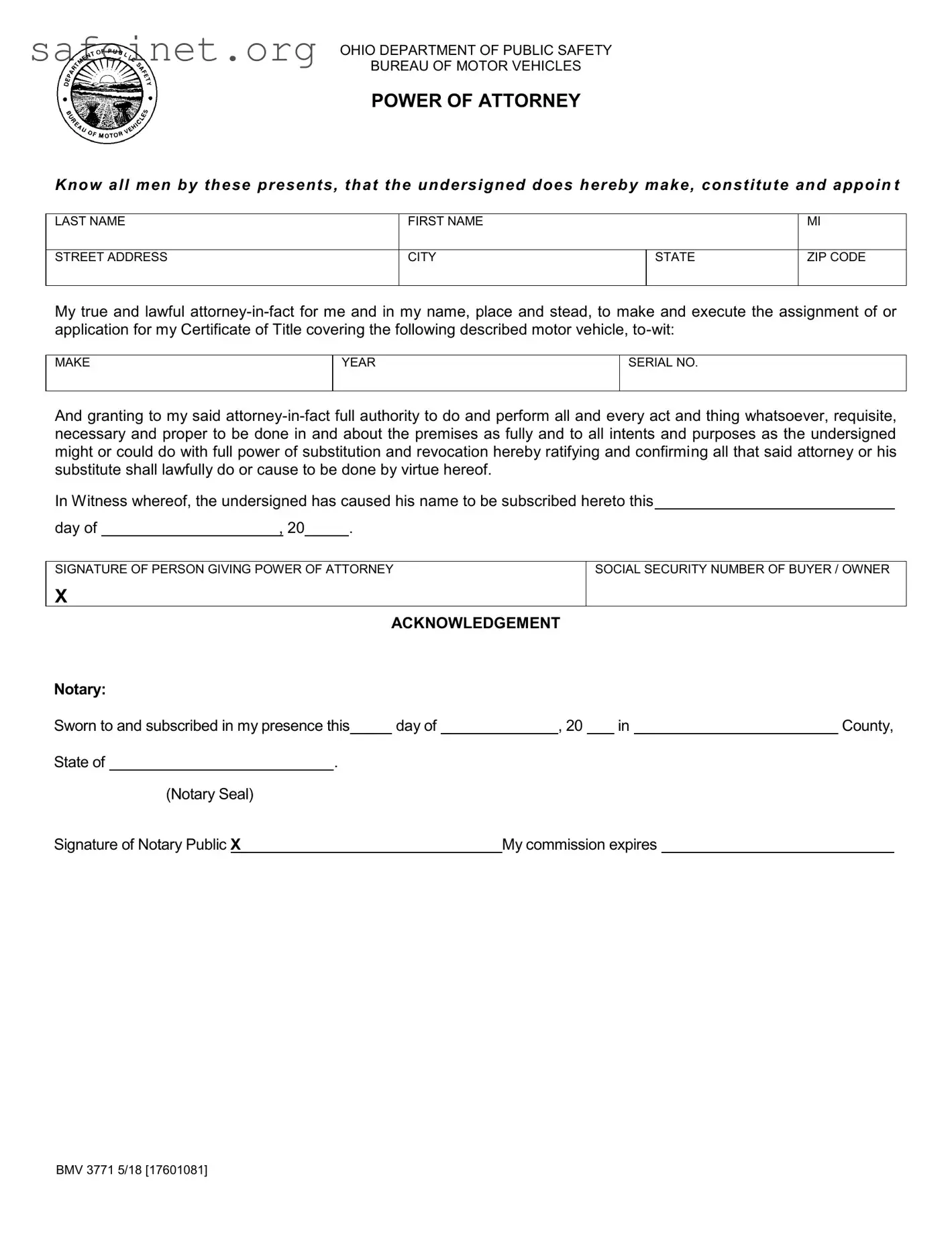The Vehicle Power of Attorney (POA) form, specifically the BMV 3771, is similar to the general Power of Attorney document. Both serve to grant a designated individual the authority to act on behalf of another party. This can include managing transactions, signing documents, and making decisions, all under the guidance of the principal’s consent. While the Vehicle POA is tailored for vehicle-related matters, a general Power of Attorney covers a broader range of financial and legal responsibilities.
Another document that aligns with the BMV 3771 is the Durable Power of Attorney. This variant remains effective even if the principal becomes incapacitated. Like the Vehicle POA, it allows an agent to handle specific tasks, and in this case, it may also be applied to manage the individual’s vehicle-related decisions during periods of inability, thus ensuring continuity in handling personal affairs.
The Limited Power of Attorney is also comparable to the BMV 3771. This document restricts the scope of authority given to the agent, typically for a specific transaction or event. When it comes to vehicle matters, it allows the agent to perform defined acts, such as registering a car or selling it, without extending powers to unrelated issues, thus providing focused control over certain decisions.
A similar form is the Medical Power of Attorney. Although primarily related to health care decisions, it shares the foundation of allowing an appointed agent to act on someone else's behalf. Each document emphasizes an individual’s right to delegate specific authority, ensuring that personal wishes are honored in their absence.
The Statutory Power of Attorney provides another example. This document is often predefined by state law, allowing individuals to assign authority for a range of actions, including those related to vehicles. Although it can cover more financial matters broadly, it can also specify vehicle transactions, similar to what the Vehicle POA encompasses.
The Revocable Living Trust is comparable in terms of delegating authority, though it serves a distinct purpose. It allows individuals to manage their assets, including vehicles, during their lifetime, with provisions for management upon their passing. The active management aspect mirrors that of the Vehicle POA while also facilitating a smoother transition of ownership when necessary.
A Bill of Sale is akin to the Vehicle POA in that it is used in the transfer of ownership. While it serves a different function, both documents are essential for vehicle transactions. A Bill of Sale formally documents the sale and transfer, while the Vehicle POA enables someone else to complete that transaction on behalf of the owner.
The Consent for Medical Treatment form, while primarily healthcare-focused, illustrates the concept of granting authority to another. It allows designated individuals to make decisions in specific situations, much like the Vehicle POA would empower an agent to handle vehicle-related issues, emphasizing the trust placed in the designated person.
Finally, the Authorization to Release Information form is similar in that it allows individuals to grant permission to another party to access personal information. In vehicle matters, this form could permit an agent to obtain pertinent vehicle records, paralleling the Vehicle POA’s intent to authorize actions on behalf of the vehicle owner.

